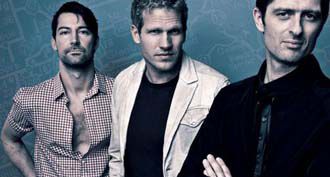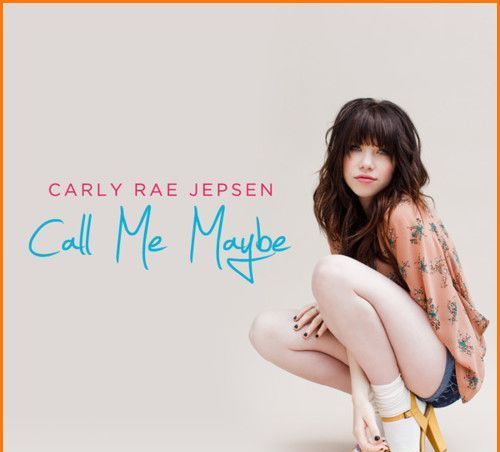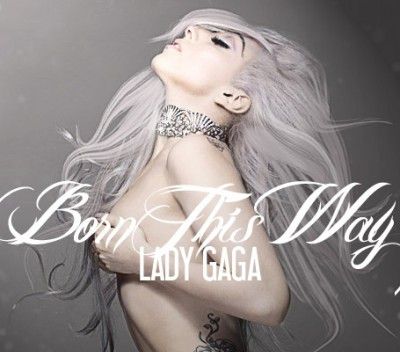06年经典译文之亚文化—垮掉的一代(4)
|
Transition to the "Hippie" era Some time during the 1960s, the rapidly expanding "beat" culture underwent a transformation: the "Beat Generation" gave way to "The Sixties Counterculture", which was accompanied by a shift in public terminology from "Beatnik" to "hippie". This was in many respects a gradual transition. Many of the original Beats remained active participants, notably Allen Ginsberg, who became a fixture of the anti-war movement -- though equally notably, Kerouac did not remain active on the scene: he broke with Ginsberg and criticized the 60s protest movements as "new excuses for spitefulness". The Beats in general were a large influence on members of the new "counterculture", for example, in the case of Bob Dylan who became a close friend of Allen Ginsberg. The year 1963 found Ginsberg living in San Francisco with Neal Cassady and Charles Plymell at 1403 Gough St. Shortly after that Ginsberg connected with Ken Kesey's crowd who was doing LSD testing at Stanford, and Plymell was instrumental in publishing the first issue of R. Crumb's Zap Comix on his printing press a few years later then moved to Ginsberg's commune in Cherry Valley, NY in the early 1970s. (The Plymells never lived at the Farm, just visited there; although they remained in Cherry Valley.) According to Ed Sanders the change in the public label from "beatnik" to "hippie" happened after the 1967 Human Be-In in San Francisco's Golden Gate Park (where Allen Ginsberg, Gary Snyder and Michael McClure were leading the crowd in chanting "Om"). There were certainly some stylistic differences between "beatniks" and "hippies" — somber colors, dark shades, and goatees gave way to colorful "psychedelic" clothing and long hair. The beats were known for "playing it cool" (keeping a low profile) but the hippies became known for "being cool" (displaying their individuality). In addition to the stylistic changes, there were some changes in substance: the beats tended to be essentially apolitical, but the hippies became actively engaged with the civil rights movement and the anti-war movement. To quote Gary Snyder in a 1974 interview (collected in The Beat Vision): ... the next key point was Castro taking over Cuba. The apolitical quality of Beat thought changed with that. It sparked quite a discussion and quite a dialogue; many people had been basic pacifists with considerable disillusion with Marxian revolutionary rhetoric. At the time of Castro's victory, it had to be rethought again. Here was a revolution that had used violence and that was apparently a good thing. Many people abandoned the pacifist position at that time or at least began to give more thought to it. In any case, many people began to look to politics again as having possibilities. From that follows, at least on some levels, the beginning of civil rights activism, which leads through our one whole chain of events: the Movement. We had little confidence in our power to make any long range or significant changes. That was the 50s, you see. It seemed that bleak. So that our choices seemed entirely personal existential lifetime choices that there was no guarantee that we would have any audience, or anybody would listen to us; but it was a moral decision, a moral poetic decision. Then Castro changed things, then Martin Luther King changed things ... Drug usage The original members or the Beat Generation group — in Allen Ginsberg's phrase, "the libertine circle" — used a number of different drugs. In addition to the alcohol common in American life, they were also interested in marijuana, benzedrine and, in some cases, opiates such as morphine. As time went on, many of them began using other psychedelic drugs, such as peyote, yage (also known as Ayahuasca), and LSD. Much of this usage can fairly be termed "experimental", in that they were generally unfamiliar with the effects of these drugs, and there were intellectual aspects to their interest in them as well as a simple pursuit of hedonistic intoxication. Benzedrine at that time was available in the form of plastic inhalers, containing a piece of folded paper soaked in the drug. They would typically crack open the inhalers and drop the paper in coffee, or just wad it up and swallow it whole. Opiates could be obtained in the form of morphine "syrettes": a squeeze tube with a hypodermic needle tip. As the Beat phenomenon spread (transforming from Beat to "beatnik" to "hippie"), usage of some of these drugs also became more widespread. According to stereotype, the "hippies" commonly used the psychedelic drugs (marijuana, LSD), though the use of other drugs such as amphetamines was also widespread. The actual results of this "experimentation" can be difficult to determine. Claims that some of these drugs can enhance creativity, insight or productivity were quite common, as is the belief that the drugs in use were a key influence on the social events of the time (see recreational drug use). Historical context The postwar era was a time where the dominant culture was desperate for a reassuring planned order; but there was a strong intellectual undercurrent calling for spontaneity, an end to psychological repression; a romantic desire for a more chaotic, Dionysian existence. The beats were a manifestation of this undercurrent (and over time, a primary focus for those energies), but they were not the only one. Before Jack Kerouac embraced "spontaneous prose", there were other artists pursuing self-expression by abandoning control, notably the improvisational elements in jazz music, and the action paintings of Jackson Pollock and the other abstract expressionists. Also, there were other artists in the post-war period who embraced a similar disdain for refined control, often with the opposite intent of suppressing the ego, and avoiding self-expression; notably, the works of the composer/writer John Cage and the paintings and "assemblages" of Robert Rauschenberg. The "cut-up" technique that Brion Gysin developed and that William Burroughs adopted after publishing Naked Lunch bears a strong resemblance to Cage's "chance operations" approach. The beats were certainly not the only form of experimental writing in the post-war period. Various other movements/scenes can be identified that were happening roughly concurrently: The Angries a group of post-war British writers with which the Beats are sometimes compared The Black Mountain poets (which John Cage was also associated with) The San Francisco Renaissance can be regarded as a separate movement of its own, with origins preceding the beats. There were many influences on the beat generation writers: Blake was a large intellectual influence on Allen Ginsberg and there are striking echoes of Walt Whitman's style in Ginsberg's work; the novel You Can't Win by Jack Black was a strong influence on William Burroughs; Marcel Proust's work was read by many of the beats, and may have inspired Kerouac in his grand scheme for a multi-volume autobiographical work. The full historical background arguably includes Henry David Thoreau, Imagism (especially Ezra Pound, William Carlos Williams and H.D.), the Objectivists and Henry Miller. Some points to consider: Gary Snyder read Pound early and was encouraged in his interests in Japan and China by Pound's work. William Carlos Williams encouraged a number of beats and wrote a preface for Howl and other poems. Pound was also important to Allen Ginsberg and to most of the San Francisco Renaissance group (Charles Olson, Robert Creeley, etc). H.D. was crucial to Robert Duncan. Rexroth published with the Objectivists. Criticism One prominent critic of the Beats was Norman Podhoretz. He was a student at Columbia who knew Ginsberg and Kerouac (some of his student poetry was published by Allen Ginsberg before their falling-out). Later Podhoretz became editor of the neo-conservative publication Commentary. In 1958, he published an article in the Partisan Review titled "The Know-Nothing Bohemians". As Russell Jacoby (in his book The Last Intellectuals) describes it, in this essay Podhoretz "defended civilization against the barbarians": "There is a suppressed cry in those books [of Kerouac]: Kill the intellectuals who can talk coherently, kill the people who can sit still for five minutes at a time." "The Bohemianism of the 1950s" is "hostile to civilization; it worships primitivism, instinct, energy, 'blood.'" For Podhoretz, "This is the revolt of the spiritually underprivileged." Podhoretz thought he glimpsed a link between the beats and the delinquents, a common hatred of civilization and intelligence. "I happen to believe that there is a direct connection between the flabbiness of American middle-class life and the spread of juvenile crime in the 1950s, but I also believe that juvenile crime can be explained partly in terms of the same resentment against normal feeling and the attempt to cope with the world through intelligence that lies behind Kerouac and Ginsberg." Another quotation from "The Know-Nothing Bohemians": "Being against what the Beat Generation stands for has to do with denying that incoherence is superior to precision; that ignorance is superior to knowledge; that the exercise of mind and discrimination is a form of death ..." Ginsberg responded in a 1958 interview with The Village Voice (collected in Spontaneous Mind), specifically addressing the charge that the Beats destroyed "the distinction between life and literature.": The novel is not an imaginary situation of imaginary truths — it is an expression of what one feels. Podhoretz doesn't write prose, he doesn't know how to write prose, and he isn't interested in the technical problems of prose or poetry. His criticism of Jack's spontaneous bop prosody shows that he can't tell the difference between words as rhythm and words as in diction ... The bit about anti-intellectualism is a piece of vanity, we had the same education, went to the same school, you know there are 'Intellectuals' and there are intellectuals. Podhoretz is just out of touch with twentieth-century literature, he's writing for the eighteenth-century mind. We have a personal literature now-Proust, Wolfe, Faulkner, Joyce. Gary Snyder in a 1974 interview (collected in The Beat Vision), comments on the subject of "casualties" of the Beat Generation: Kerouac was a casualty too. And there were many other casualties that most people have never heard of, but were genuine casualties. Just as, in the 60s, when Allen and I for a period there were almost publicly recommending people to take acid. When I look back on that now I realize there were many casualties, responsibilities to bear. Quotes "The so-called Beat Generation was a whole bunch of people, of all different nationalities, who came to the conclusion that society sucked." - Amiri Baraka "sitting around trying to think up the meaning of the lost generation's subsequent existentialism, I said 'You know John, this is really a beat generation', he lept up and said 'That's it! That's right!'" - Jack Kerouac "But yet, but yet, woe, woe unto those who think that the Beat Generation means crime, delinquency, immorality, amorality ... woe unto those who attack it on the grounds that they simply don’t understand history and the yearning of human souls ... woe in fact unto those who make evil movies about the Beat Generation where innocent housewives are raped by beatniks! ... woe unto those who spit on the Beat Generation, the wind’ll blow it back." - Jack Kerouac "Three writers does not a generation make." - Gregory Corso "Nobody knows whether we were catalysts or invented something, or just the froth riding on a wave of its own. We were all three, I suppose." - Allen Ginsberg (quoted in Great Poets Howl: A Study of Allen Ginsberg's Poetry, 1943-1955 ISBN 3820477616) "Once when Kerouac was high on psychedelics with Timothy Leary, he looked out the window and said, 'Walking on water wasn't built in a day.' Our goal was to save the planet and alter human consciousness. That will take a long time, if it happens at all." - Allen Ginsberg |








